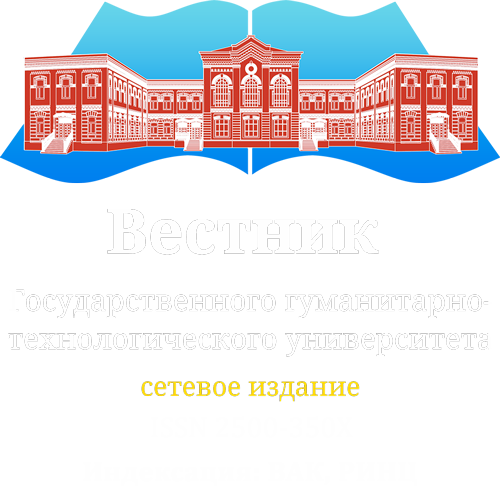Вестник Государственного гуманитарно-технологического университета. 2022. № 3. С.191-198. ISSN 2500-350Х (online)
Vestnik of State University of Humanities and Technology. 2022. no 3. P. 191-198. ISSN 2500-350X (online)
Научная статья
УДК 821.161.1-1.09:94(47)
💾Феномен Петра Первого и петербургский период истории в поэме М. Волошина «Россия»
Михаил Владимирович Яковлев
Государственный гуманитарно-технологический университет, Орехово-Зуево, Россия, 79104310619@yandex.ru
Аннотация. В статье исследуется своеобразие трактовки образа Петра Первого и петербургского периода истории в поэме М. Волошина «Россия» 1924 года. Фрагменты статьи были предложены в форме доклада на конференции «Феномен Петра Первого в русской истории, культуре и художественной литературе»» в связи с 350-летием со дня его рождения.
Научная новизна заключается в современной интерпретации историософской поэмы в системе парадоксов и аллюзий, вызванных Октябрьской революцией и Гражданской войной. В 2022 году отмечается 100-летие завершения послереволюционной войны, однако острые социально-политические, нравственно-философские, метаисторические проблемы, затронутые Волошиным в 1924 году, делают художественное произведение пророческим.
Актуальность статьи обусловлена юбилеем Петра Первого и художественной версией историософской поэмы Волошина, посвященной осознанию петербургского периода русской истории и судьбы Российской Империи.
Волошин символически сближает Петровскую эпоху и современную ему революционную действительность, метафорически называя царя-реформатора «большевиком». В метаисторической концепции произведения выявляется общая логика общественно-исторического процесса, охватывающего 200 лет развития Российской Империи, созданной Петром Первым и завершившей свое историческое существование в революционном Петрограде 1917 года.
В ходе герменевтического анализа поэмы определяется двойственность понимания исторического процесса. В поэтике историософского произведения М. Волошина образ Петра Первого, Петербурга и петербургского периода русской истории получает парадоксальное, антиномическое воплощение, формируя апокалиптические антиномии Власти и Свободы.
Ключевые слова: М. Волошин, поэма, историософия, образ России, парадокс, апокалиптика
Для цитирования: Яковлев М.В. Феномен Петра Первого и Петербургский период истории в поэме М. Волошина «Россия» // Вестник Государственного гуманитарно-технологического университета. 2022. № 3. С. 191-198.
THE PHENOMENON OF PETER THE GREAT AND THE PETERSBURG PERIOD OF HISTORY IN M. VOLOSHIN’S POEM «RUSSIA»
Mikhail V. Yakovlev
State University of Humanities and Technology, Orekhovo-Zuyevo, Russia, 79104310619@yandex.ru
Abstract. The article considers the peculiarity of the interpretation of the image of Peter the Great and the St. Petersburg period of history in M. Voloshin’s poem «Russia» in 1924. Fragments of the article were offered in the form of a report at the conference «The Phenomenon of Peter the Great in Russian history, culture and fiction» in connection with the 350th anniversary of his birth.
The scientific novelty is in the modern interpretation of the historiosophical poem in the system of paradoxes and allusions caused by the October Revolution and the Civil War. In 2022, the 100th anniversary of the end of the post-revolutionary war is celebrated, but the acute socio-political, moral-philosophical, metahistorical problems raised by Voloshin in 1924 make the artwork prophetic.
The relevance of the article is due to the anniversary of Peter the Great and the artistic version of Voloshin’s historiosophical poem dedicated to the awareness of the Petersburg period of Russian history and the fate of the Russian Empire.
Voloshin symbolically brings together Peter the Great era and the revolutionary reality contemporary to him, metaphorically calling the reformer tsar a «bolshevik». The metahistorical concept of the work reveals the general logic of the socio-historical process covering 200 years of the development of the Russian Empire, created by Peter the Great and completed its historical existence in revolutionary Petrograd in 1917.
In the course of the hermeneutic analysis of the poem, the duality of understanding the historical process is determined. In the poetics of M. Voloshin’s historiosophical work, the image of Peter the Great, St. Petersburg and the Petersburg period of Russian history receives a paradoxical, antinomic embodiment, forming apocalyptic antinomies of Power and Freedom.
Keywords: M. Voloshin, poem, historiosophy, the image of Russia, paradox, apocalypticism.
For citation: Yakovlev M.V. Тhe phenomenon of Рeter the Great and the Petersburg period of history in M. Voloshin’s poem «Russia» // Vestnik of State University of Humanities and Technology. 2022. no 3. P. 7‒16.
Информация об авторе
М.В. Яковлев – доктор филологических наук, профессор кафедры русского языка и литературы Государственного гуманитарно-технологического университета.
Information about the author
M.V. Yakovlev – Doctor of Philology, Professor of the Chair of the Russian Language and Literature, State University of Humanities and Technology.
Статья поступила в редакцию 29.08.2022; одобрена после рецензирования 09.09.2022; принята к публикации 22.09.2022.
The article was submitted 29.08.2022; approved after reviewing 09.09.2022; accepted for publication 22.09.2022.
